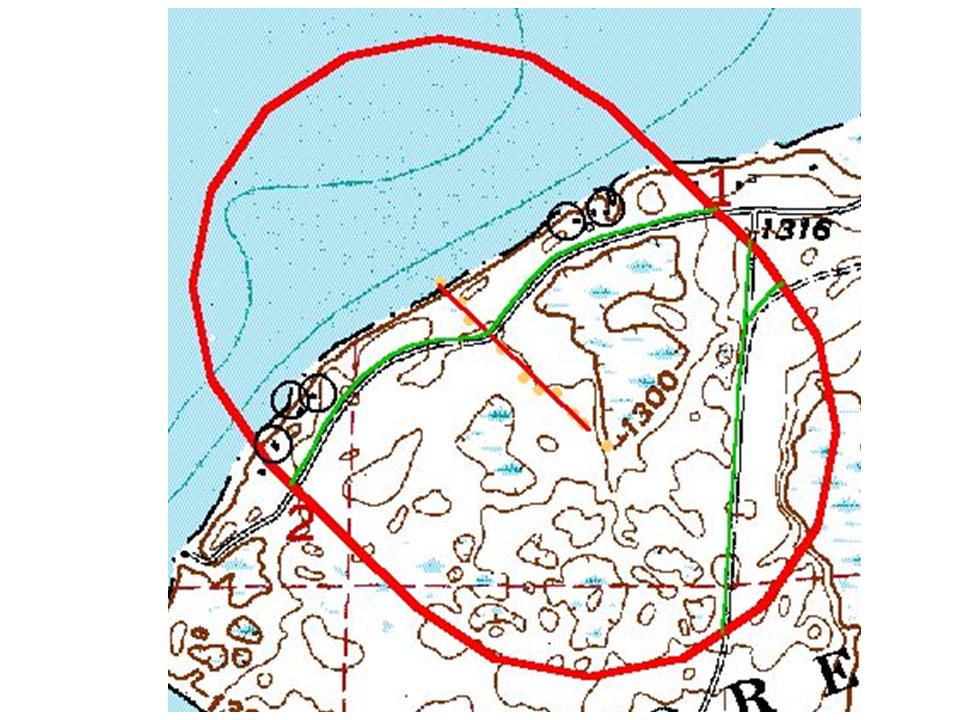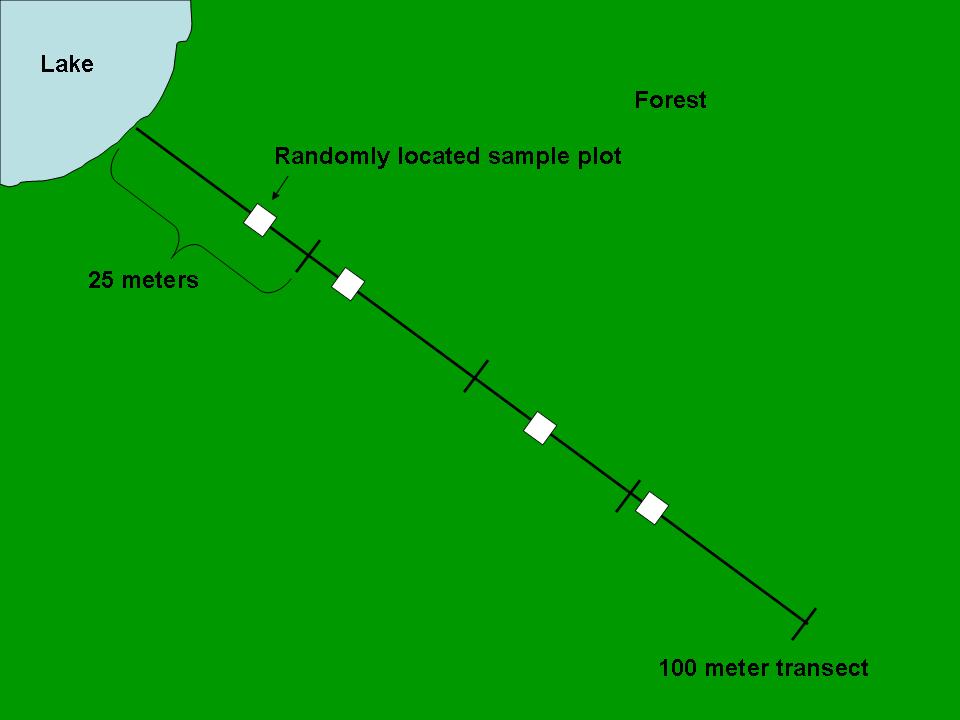The transect is simply a line that spans the gradient of interest, and then you locate your sample plots along this line (see Figure 1). The length of your transect would be determined by the gradient you are sampling. For example, research has shown that the “edge effects” of a forest can be seen up to 100 meters into the forest, so to examine this gradient you would want to use a transect at least 100 meters long.
 |
 |
Locating sample plots along the transect either in a uniform manner (i.e. every 10 meters) or by “randomly stratifying” the sample plots. Random stratification adds the element of randomness to your sample plot select even when using a transect (to learn more about using randomization, click here.
To randomly stratify your sample plots, divide the transect into logical subdivisions given the length of your transect (i.e. every 50 meters for a 500 meter transect or every 10-20 meters for a 100 meter transect) and the pattern you are trying to examine (i.e. if you expect rapid change then perhaps more subdivisions, if you expect slow graduate change, then perhaps fewer subdivisions). Then use random numbers to locate the sample plots with each subdivision of the transect (see Figure 2). To view a random numbers table, click here.